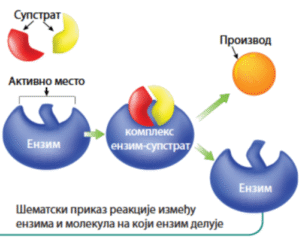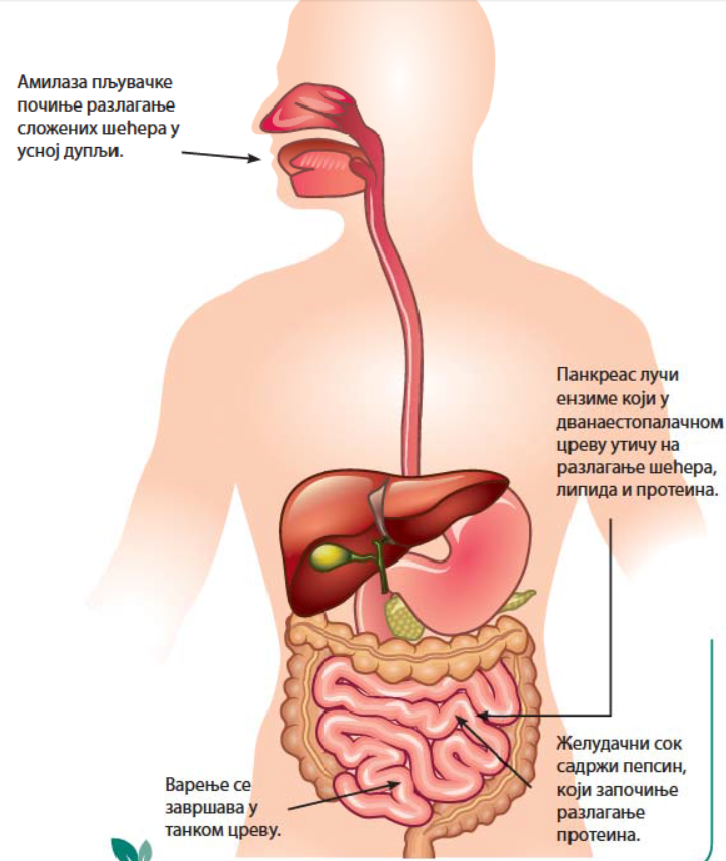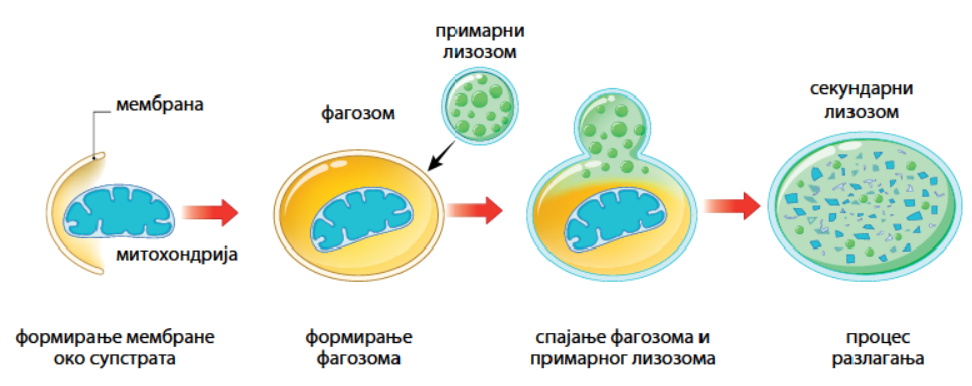atomistica.online
Metabolic pathway and enzymes
Metabolic pathway and enzymes
Metabolic processes in cells consist of many biochemical reactions. A chain of successive reactions that leads to the formation or breakdown of a specific product is called a metabolic pathway.
None of these pathways could function correctly without the participation of special molecules – enzymes.
Enzymes are biochemical catalysts that regulate the speed of chemical reactions and determine their course. By chemical nature, most enzymes are proteins. They represent the main drivers of metabolic processes.
👉 Catalyst – a substance that is added to a reaction in order to speed it up.
For enzymes to function properly and at the right moment, certain conditions must be provided:
- 🌿 Optimal temperature – most enzymes work best at temperatures close to body temperature.
- 🌿 Optimal pH value – each enzyme functions efficiently only within a specific pH range.
- 🌿 Enzyme concentration – biochemical reactions proceed faster when a larger amount of enzymes is present.
As shown in the picture, a biochemical reaction begins when an enzyme binds to a substrate, i.e., the molecule on which the enzyme acts. The part of the enzyme that directly participates in binding to the substrate is called the active site.
When the enzyme and substrate connect, a enzyme–substrate complex is formed. Within this complex, the biochemical reaction takes place, resulting in the creation of a specific product.
After the product separates from the enzyme, the enzyme itself remains unchanged and can quickly participate in another reaction.

Interesting Fact
Some substances can block the activity of enzymes. These substances are called enzyme inhibitors. One of the most famous inhibitors is the antibiotic penicillin, discovered by Alexander Fleming in the 1930s.
Bacteria have a cell wall, which is built with the help of specific enzymes. When a substance from the mold Penicillium blocks these enzymes, the process of building the bacterial cell wall is interrupted. Without a functional wall, bacteria cannot survive, which leads to their death and the stopping of infection.
An inhibitor binds to the active site of the enzyme, preventing the substrate from attaching to the enzyme and stopping the reaction.
Effect of inhibitors
An inhibitor attaches to the active site of the enzyme and prevents the substrate from binding.
The connection between a substrate and the active site of an enzyme is often explained using the “lock-and-key” model, which emphasizes the physical fit between the enzyme and the substrate. According to this model, the enzyme’s active site matches the substrate perfectly in shape.
Today, this view is somewhat refined, so another model is also accepted – the “induced fit model.” It suggests that the active site slightly changes its shape to better adapt to the substrate (similar to how a glove adjusts to a hand when we put it on). Both models support the idea that enzymes are specific, meaning each acts only on a particular compound or a group of very similar compounds.
Enzyme names are usually based on the substance they act on, with the suffix -ase added. For example, the enzyme that breaks down lactose (milk sugar) is called lactase.
All proteins, including enzymes, are synthesized in special cell structures – ribosomes. After being produced, some enzymes leave the cell to act in the external environment, while others remain inside the cell where they perform their function.
Example of Enzyme Action Outside the Cell
Some enzymes act outside the cells where they are produced. A good example are the enzymes that participate in the process of digestion, i.e., the breakdown of food.
As you already know, digestion takes place in the mouth, stomach, and small intestine. The food we eat contains three main types of complex organic molecules – carbohydrates, proteins, and fats (lipids) – all of which must be broken down.
Through the action of enzymes, these large molecules are decomposed into their basic building blocks. For instance, the fundamental units of proteins are amino acids (a topic you will also cover in chemistry).
The simpler molecules obtained during digestion are then transported by the blood to the body’s cells, where they are used in various biological processes.

Enzyme Activity in the Digestive System
- Mouth: Salivary amylase begins the breakdown of complex carbohydrates in the oral cavity.
- Stomach: Gastric juice contains the enzyme pepsin, which starts the digestion of proteins.
- Duodenum: The pancreas releases enzymes that act in the duodenum, breaking down sugars, fats (lipids), and proteins.
- Small intestine: The process of digestion is completed in the small intestine, where nutrients are fully broken down into their simplest forms for absorption.
For digestion to proceed quickly and efficiently, the presence of three key enzymes is essential: amylase, pepsin, and lipase.
- Amylase is found in saliva and initiates the breakdown of carbohydrates already in the mouth.
- Once food reaches the stomach, the enzyme pepsin begins the digestion of proteins.
- The partially digested food then moves into the duodenum (the first part of the small intestine), where digestion continues.
Through the pancreatic duct, the duodenum receives pancreatic enzymes:
- Amylase, which completes the breakdown of sugars,
- Lipase, which digests fats,
- and inactive protein-digesting enzymes (trypsinogen and chymotrypsinogen), which are activated in the small intestine and continue the process of protein digestion.
Example of Enzyme Action Inside the Cell
As mentioned earlier, some enzymes produced in ribosomes remain in the cell and act there. A good example are the hydrolytic enzymes found in lysosomes – cell organelles responsible for breaking down substances that are either unnecessary or harmful to the cell.
There are about 40 different enzymes that can be found in lysosomes, and their exact combination depends on the type of cell. All of these enzymes function best in an acidic environment, with an optimal pH of around 5.

Lysosomes inside the cell exist as primary and secondary lysosomes.
- Primary lysosomes are vesicles formed in the Golgi apparatus. They contain enzymes produced in ribosomes but are not yet active because no substrate is present.
- The substrate may come from within the cell (for example, worn-out organelles or damaged cell parts) or from outside the cell (such as bacteria, viruses, and other foreign particles). Around the substrate that needs to be broken down, a vesicle called a phagosome is formed.
Although the phagosome contains the substrate, it does not have the enzymes required for its breakdown. When a primary lysosome fuses with a phagosome, a secondary lysosome is created. Within the secondary lysosome, the enzymes become active and begin digesting the substrate.
As a result of this process, various smaller molecules are released. Some of them can be reused by the cell and are transported into the cytoplasm, while other, unusable particles are expelled from the cell
Metabolic pathway and enzymes - Overview
1. Metabolic Pathways
Metabolic processes = series of biochemical reactions.
A chain of reactions that produces or breaks down a product = metabolic pathway.
Enzymes make these pathways possible.
2. Enzymes
Definition: biochemical catalysts that control the speed of reactions.
Most enzymes are proteins.
They are the main drivers of metabolism.

Conditions for enzyme activity:
Optimal temperature – close to body temperature.
Optimal pH – each enzyme has its own pH range.
Enzyme concentration – more enzymes → faster reaction.
3. Enzyme–Substrate Reaction
Reaction starts when enzyme binds to a substrate (molecule acted upon).
The binding site is called the active site.
Together they form an enzyme–substrate complex.
Reaction occurs → product is made.
Enzyme stays unchanged → can be reused.
4. Enzyme Inhibitors (Interesting fact)
Some substances block enzyme activity = inhibitors.
Example: Penicillin (discovered by Alexander Fleming).
Penicillin prevents bacteria from building cell walls → bacteria die.
Inhibitor binds to the active site and prevents the substrate from binding.
Effect of inhibitors: they stop or slow down reactions.
5. Models of Enzyme Action
Lock-and-key model: active site fits perfectly with the substrate.
Induced fit model: active site slightly changes shape to fit the substrate (like a glove on a hand).
Enzymes are specific – each works on one compound or a small group of similar compounds.
Naming rule: enzyme names end with -ase.
Example: lactose → lactase.
Production:
All proteins, including enzymes, are made in ribosomes.
Some enzymes act outside the cell, others act inside the cell.
Examples of Enzyme Action
6. Outside the Cell – Digestion
Enzymes in digestion break food into building blocks.
Digestion happens in: mouth, stomach, small intestine.
Food contains: carbohydrates, proteins, fats → must be broken down.
Proteins → amino acids.
Products travel in the blood to cells.
Digestive Enzyme Activity
Mouth: amylase begins breakdown of starch (carbohydrates).
Stomach: pepsin starts protein digestion.
Duodenum (first part of small intestine): pancreas releases enzymes:
amylase (finishes sugar breakdown)
lipase (digests fats)
trypsinogen & chymotrypsinogen (inactive → activated in intestine, continue protein digestion).
Small intestine: digestion completes → nutrients absorbed.
7. Inside the Cell – Lysosomes
Some enzymes stay inside the cell → act in lysosomes.
Lysosomes = organelles that break down harmful or unnecessary substances.
~40 different enzymes can be present.
Work best in acidic conditions (pH ≈ 5).
Types of Lysosomes
Primary lysosomes: vesicles with enzymes, not yet active.
Secondary lysosomes: formed when primary lysosome fuses with a phagosome (vesicle with substrate).
Inside secondary lysosome → substrate is digested.
End result:
Useful molecules → go to cytoplasm (cell reuses them).
Waste particles → expelled from the cell.
